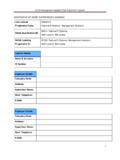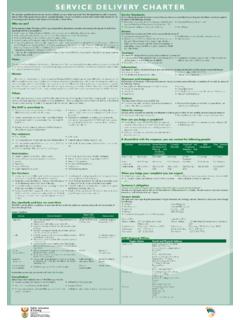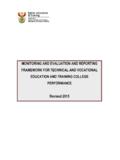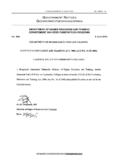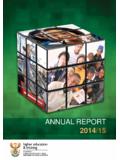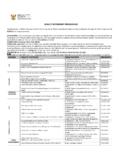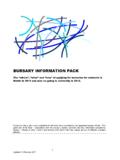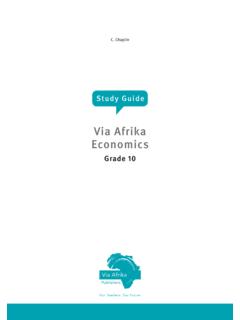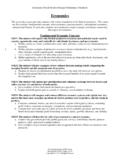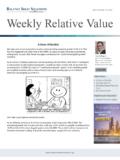Transcription of NATIONAL SENIOR CERTIFICATE FOR ADULTS NQF …
1 NATIONAL SENIOR CERTIFICATE FOR ADULTS NQF LEVEL 4 DRAFT subject STATEMENT ECONOMICS AND management sciences 1 economic sciences Table of Contents economic sciences .. 1 INTRODUCTION .. 2 ASSUMPTIONS: The envisaged candidate.. 2 EXIT-LEVEL OUTCOMES .. 3 AIMS .. 3 ASSESSMENT OBJECTIVES .. 4 THEME .. 8 TOPICS .. 8 SUB TOPICS .. 8 LEARNING OUTCOMES .. 8 ASSESSMENT .. 21 SCHEME OF ASSESSMENT .. 22 Annexure .. 24 2 INTRODUCTION economic and management sciences is an integrated subject that draws on knowledge from the disciplines of Economics, Accounting, Business Studies and The Curriculum is designed to equip adult learners with basic knowledge and skills to enable them to become acquainted with the world of business and economics, which could contribute to achieving the goal of becoming informed, productive and responsible citizens. The purpose of the curriculum is to introduce adult learners to knowledge and skills that will enable them to develop basic business and economic literacy so that they may understand their personal role in the world of business and economics and be able to make educated and responsible decisions and choices as they engage in societal activities.
2 ASSUMPTIONS: The envisaged candidate. This curriculum is designed around a candidate who: Is 18 years or older Is out of school Is possibly in some form of employment or seeking employment had some knowledge of commercial activities intends to convert his/her experiences into formal knowledge is desperately seeking to be absorbed in formal employment is prepared to pursue his/her studies at a tertiary institution at some later stage 3 EXIT-LEVEL OUTCOMES By the end of this course students should be able to: a) Demonstrate knowledge and skills identified for competencies in economic sciences b) Apply acquired knowledge to solve problems in the economic sciences c) To communicate, in writing knowledge in the economic sciences field of study d) Reflect on his/her achievement and pursue his/her interest in the field. AIMS The aims are to enable candidates to: 1. Use economic knowledge and skills to better understand the world in which they live; 2.
3 Make effective use of relevant economic terminology, concepts and methods; 3. Develop and apply basic economic numeracy and literacy skills to handle simple data; 4. Understand fundamental accounting concepts, principles, and procedures to analyze and interpret information; 5. Understand how the main types of business are organized and financed; 6. Apply the tools of economic analysis to their everyday economic lives; 7. Apply their knowledge to evaluate current business and economic issues and problems; 8. Critique qualitative and quantitative data to make informed judgments; 9. Become aware of innovation and change in business activities; 10. Develop attitudes of accuracy and logical thought. 4 ASSESSMENT OBJECTIVES These describe the knowledge, skills and abilities which candidates are expected to demonstrate at the end of the course. Language and communication Read and comprehend business, accounting and economic knowledge Analyse and interpret problems and suggest solutions Argue logically on the basis of disciplinary knowledge and principles Develop Communication skills (narrate, debate, discuss)
4 Projection Use information in preparing cash budgets to project future cash positions Use economic data to analyse economic performance and prepare for contingencies Predict and forecast economic results Analytical Analyse results of financial statements Interpret economic and business data Evaluation Evaluate the effectiveness of the investment decisions Evaluate success potential of envisaged business ventures 5 Evaluate government initiatives to address economic issues Evaluate personal economic decision making Problem solving Identify problems emanating from the world of business Develop skills for solving problems solutions for identified problems Resorting to legislation to solve problems Mathematical Develop basic numerical skills Use ratio analysis to inform business and accounting decision making and assess economic performance Use results to assess economic performance Reasoning Draw conclusions from economic and financial data (case studies and accounting data) Make critical judgements on business decisions taken Discriminate between facts and opinion Citizenship Engage social responsibility as a worthy value Engage in ethical debates as it relates to the world of business and economics Reporting Reporting on financial results.
5 6 CONTENT Outline Contents Hours Total Weeks Module 1 THE ECONOMY economic concepts economic systems economic environments The structure of the SA economy Market dynamics - price theory 4,5 Hrs 4,5 Hrs 8,5 Hrs 6,5 Hrs 8 Hrs 32 8 Module 2 ESTABLISHING A BUSINESS Entrepreneurship Forms of ownership 8 Hrs 6 Hrs 14 3,5 Module 3 BUSINESS OPERATIONS Functions of business overview Specific Business functions: o Marketing o Human resources o Administration 2 Hrs 6 Hrs 7 Hrs 13 Hrs 28 7 7 Module 4 MONEY MATTERS PERSONAL AND BUSINESS Money and Net Worth Managing Accounts Investment Debt control Insurance Contracts Taxation VAT 1Hr 3 hrs 5 Hrs 3 Hrs 4 Hrs 4 Hrs 2 Hrs 4 Hrs 26 Hrs 6,5 Module 5 CONTEMPORARY economic ISSUES Inflation Unemployment CSI 6 Hrs 6 Hrs 4 hrs 16 Hrs 4 TOTAL 116 HOURS 116 HOURS 29 8 CONTENTS DETAILED Module 1 The Economy.
6 THEME TOPICS SUB TOPICS LEARNING OUTCOMES economic Concepts The economic problem The scarcity problem The basic processes What to produce How to produce For whom to produce Differentiate between Free and economic goods Describe the process of: Production Consumption Exchange Distribution economic systems Centrally planned, Mixed and Market economies South Africa s mixed economy Characteristics only Advantages and disadvantages List the characteristics of different types of Economies Contrast the systems Assess the efficiency of South Africa s mixed economy . economic environments economic sectors Primary, secondary and tertiary sectors Distinguish between Primary, secondary and tertiary industries Provide examples of each 9 Public and Private sectors Formal and informal sectors Distinguish between Public and private sectors Explain the advantages and disadvantages of each type.
7 Provide examples of each. The State Functions of the state The govt. s macroeconomics policy Public sector intervention Describe all the functions of the state: Security Social welfare Legislation Preserving resources Money and banking Provide infrastructure Encouraging business Comment on the government intervention Evaluate the achievements of these interventions . Business environments Micro environment Market environment Describe the components of each: Micro Vision and mission All business functions Market environment: Suppliers Consumers Competitors 10 Macro environment Macro environment: economic Social Legal Technological Political International The structure of the South African economy Composition of primary, secondary and tertiary sectors in SA Infrastructure Communication Transport Energy Research the contributions made by each sector Analyse South Africa s infrastructure Market Dynamics Price theory in the Perfect market only Imperfect markets Demand and supply table Graphical representation Movements along the curves Shifting of curves Monopolies, oligopolies.
8 Monopolistic competition Draw up demand and supply tables Illustrate demand and supply graphically Graphically show how changes in demand and supply affect price Illustrate increases in demand and supply Briefly distinguish between these type of markets END OF MODULE 1 11 MODULE 2 Establishing a Business Entrepreneurship Qualities of entrepreneurs Acquiring business Business plans Qualities that all good entrepreneurs should have Ways in which one can start a business Components of a business plan Describe the following qualities: Vision Creativity Responsibility Energetic Take risks Committed Integrity Adaptable Professional Well informed Interpersonal skills Organizing ability Describe the process of Starting new business Purchasing an existing business Franchising Draw up suitable business plans for a proposed venture 12 Forms of Ownership Sole trader Partnership Companies Other CC and Co-op s South Africa s ownership statistics Public and private companies Purpose of these types of ownerships South African business statistics List the characteristics, advantages and the disadvantages of the sole trader.
9 List the characteristics, advantages and the disadvantages of the partnership. List the characteristics, advantages and the disadvantages of the public and private companies. Refer to the new Companies Act Analyse the % contribution of each of the types of business END OF MODULE TWO 13 MODULE 3 Business Operations Functions of business An overview of all the business functions : Explain the importance of each of the functions Briefly describe all the ten business functions The ten business functions: Marketing, Human resources, Financial, Administration, Public Relations, General management , Procurement, Additional functions Risk management and Information Technology Specific Business Functions Marketing The 7 P s ; Product Policy Describe the 7 P,s of Marketing Describe the Product Policy 14 Human Resources Packaging Policy Pricing Policy Promotion Policy Place (distribution) People, process and physical aspects The Human Resource function Activities Describe the packaging policy Describe the pricing policy Describe the promotion policy Describe the Promotion Policy (Marketing communication policy) Explain People Process Physical environment in the marketing process Explain the Importance of this function Explain the processes of.
10 15 Administration Training Applying for a job Benefits Labour relations Legislation Information management Accounting principles and practice Accounting for sole trader - Up to Recruitment, Selection Placement Interviews Distinguish between different types of training Draw up a CV Briefly discuss Employee Benefits Explain the nature and purpose of Labour Relations Explain the functions of the trade unions Briefly describe the purpose of the following Acts; EEA COIDA Skills Development Act Basic Conditions of Employment Act LRA BBBEEA Explain the sources and importance of information management Describe the underlining principles of GAAP 16 balance sheet stage Accounting for other forms Draw up all journals Post to ledger accounts, Draw up final accounts and financial statements Show applications of accounting to the other forms.
